Viewing entries in
Photo Of The Day
 We mentioned on Tuesday that Beth Shean’s history covers an enormous expanse of time. During the Iron Age, Israel possessed Beth Shean for some time, and fortifications such as this one are thought to belong to this period. One can see the immense territory this lookout could cover, with this view showing the detail of the top of the tel, but also showing a view into and across the Jordan Valley.
We mentioned on Tuesday that Beth Shean’s history covers an enormous expanse of time. During the Iron Age, Israel possessed Beth Shean for some time, and fortifications such as this one are thought to belong to this period. One can see the immense territory this lookout could cover, with this view showing the detail of the top of the tel, but also showing a view into and across the Jordan Valley.
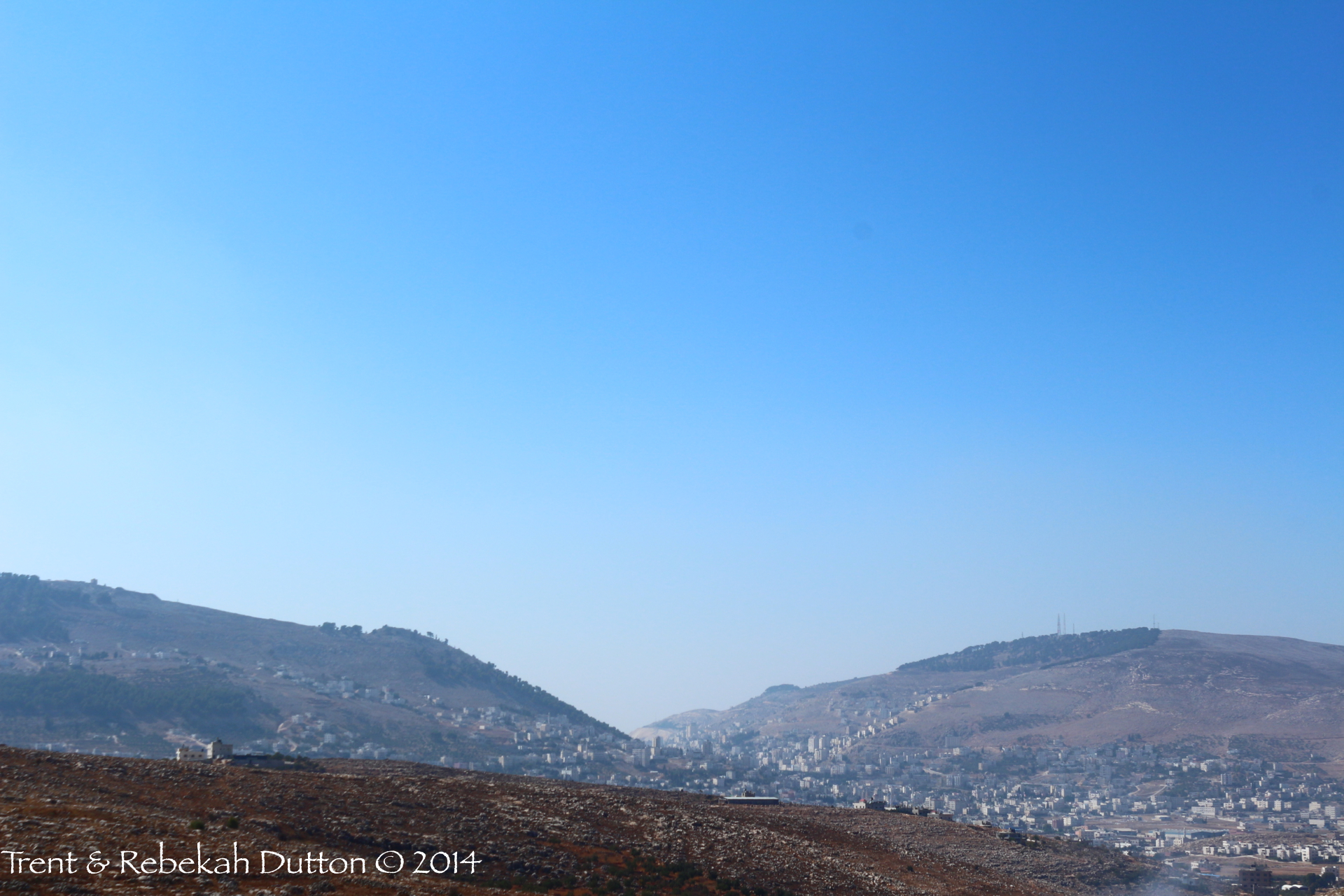 A view not often seen on a typical tour of Israel is that of Mt. Gerizim (left) and Mt. Ebal (right), looking west at their profiles. From this angle, one can see their proximity, illustrating how two halves of one great nation could face one another on each mountain to deliver the blessings and the curses. These mountains can most commonly be seen on the North-South highway approaches to the modern day city of Nablus, which contains the ancient site of Shechem.
A view not often seen on a typical tour of Israel is that of Mt. Gerizim (left) and Mt. Ebal (right), looking west at their profiles. From this angle, one can see their proximity, illustrating how two halves of one great nation could face one another on each mountain to deliver the blessings and the curses. These mountains can most commonly be seen on the North-South highway approaches to the modern day city of Nablus, which contains the ancient site of Shechem.
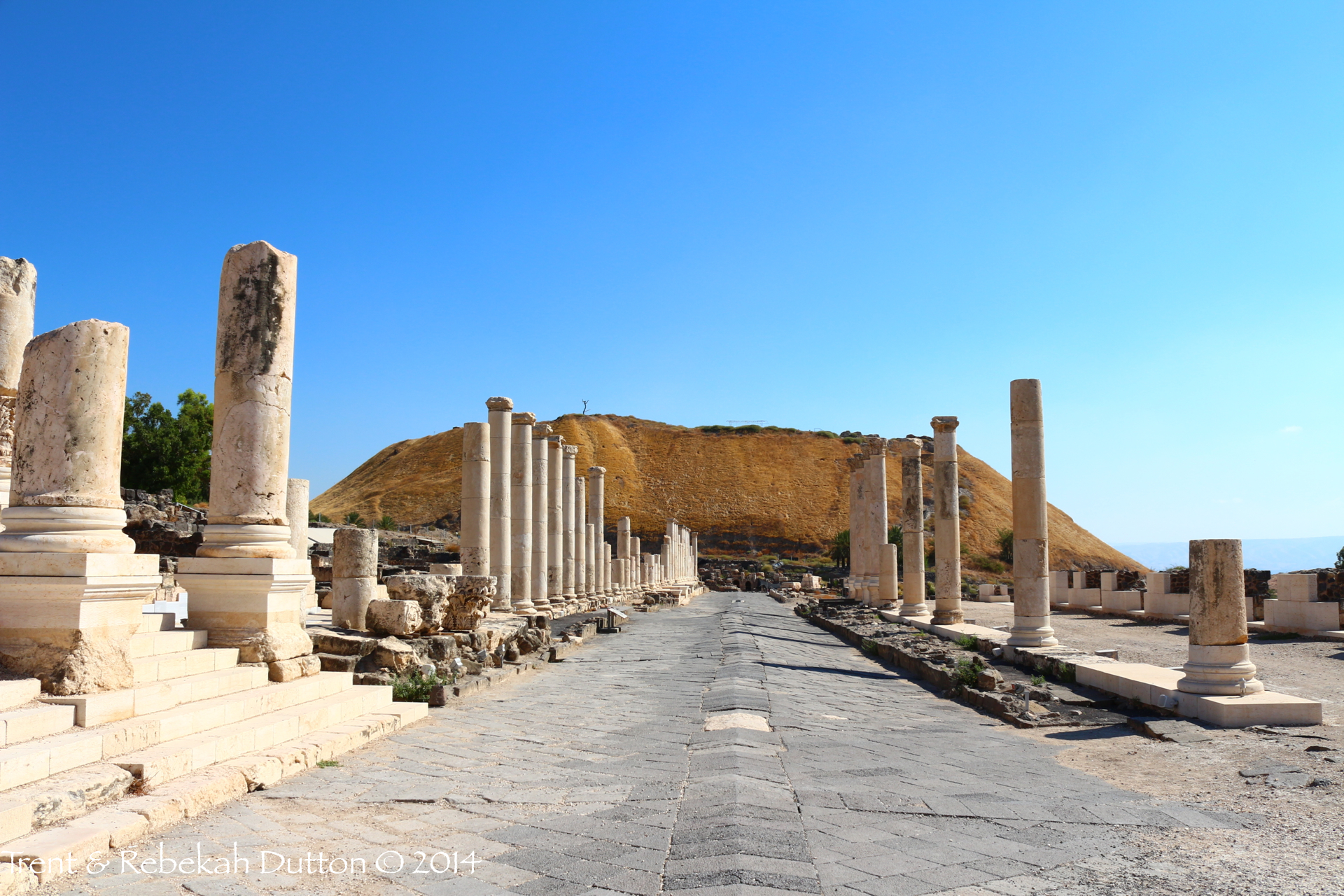 We have recently mentioned Bethshean from the perspective of Mt. Gilboa. This is a view from ground level just below the tel, from the Roman Cardo Maximus. Once an Egyptian governor’s seat during the Middle Bronze Age, Beth Shean would change hands often, eventually moving from the main tel to the fully Romanized city below—due mainly to its strategic location in the Jordan Valley.
We have recently mentioned Bethshean from the perspective of Mt. Gilboa. This is a view from ground level just below the tel, from the Roman Cardo Maximus. Once an Egyptian governor’s seat during the Middle Bronze Age, Beth Shean would change hands often, eventually moving from the main tel to the fully Romanized city below—due mainly to its strategic location in the Jordan Valley.
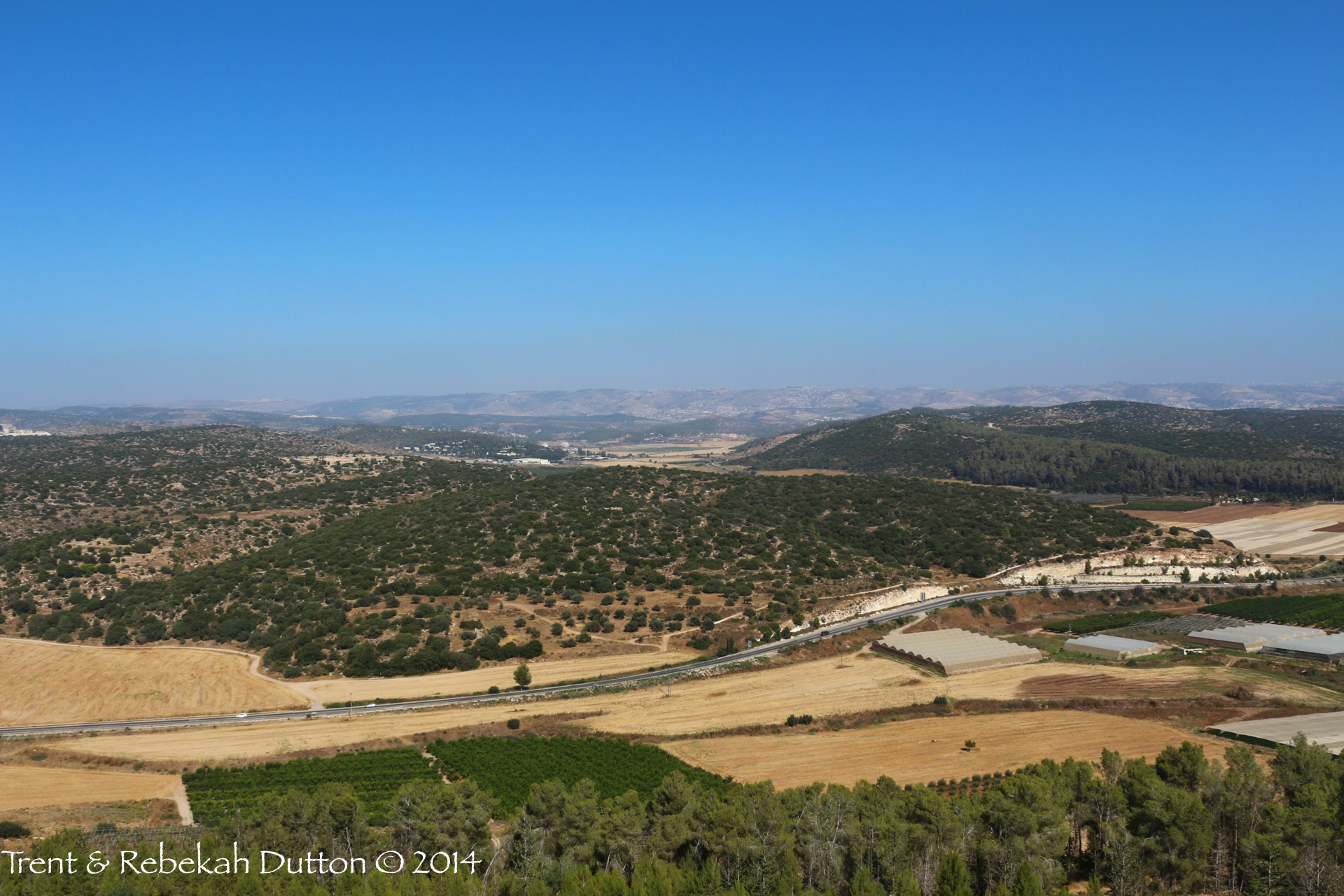 As with so many views from high points or tels in Israel, much can be packed into one landscape. This view from Azekah is significant enough itself, but from here looking east and slightly southeast, you can see the Elah Valley just beyond the road and green hill below. To the right of the valley is Sochoh, on the left is Khirbet Qeiyafa, of much Biblical Archaeology fame and debate over the past few years. Azekah, Sochoh, and the Elah Valley all feature in the account of David and Goliath (I Samuel 17).
As with so many views from high points or tels in Israel, much can be packed into one landscape. This view from Azekah is significant enough itself, but from here looking east and slightly southeast, you can see the Elah Valley just beyond the road and green hill below. To the right of the valley is Sochoh, on the left is Khirbet Qeiyafa, of much Biblical Archaeology fame and debate over the past few years. Azekah, Sochoh, and the Elah Valley all feature in the account of David and Goliath (I Samuel 17).
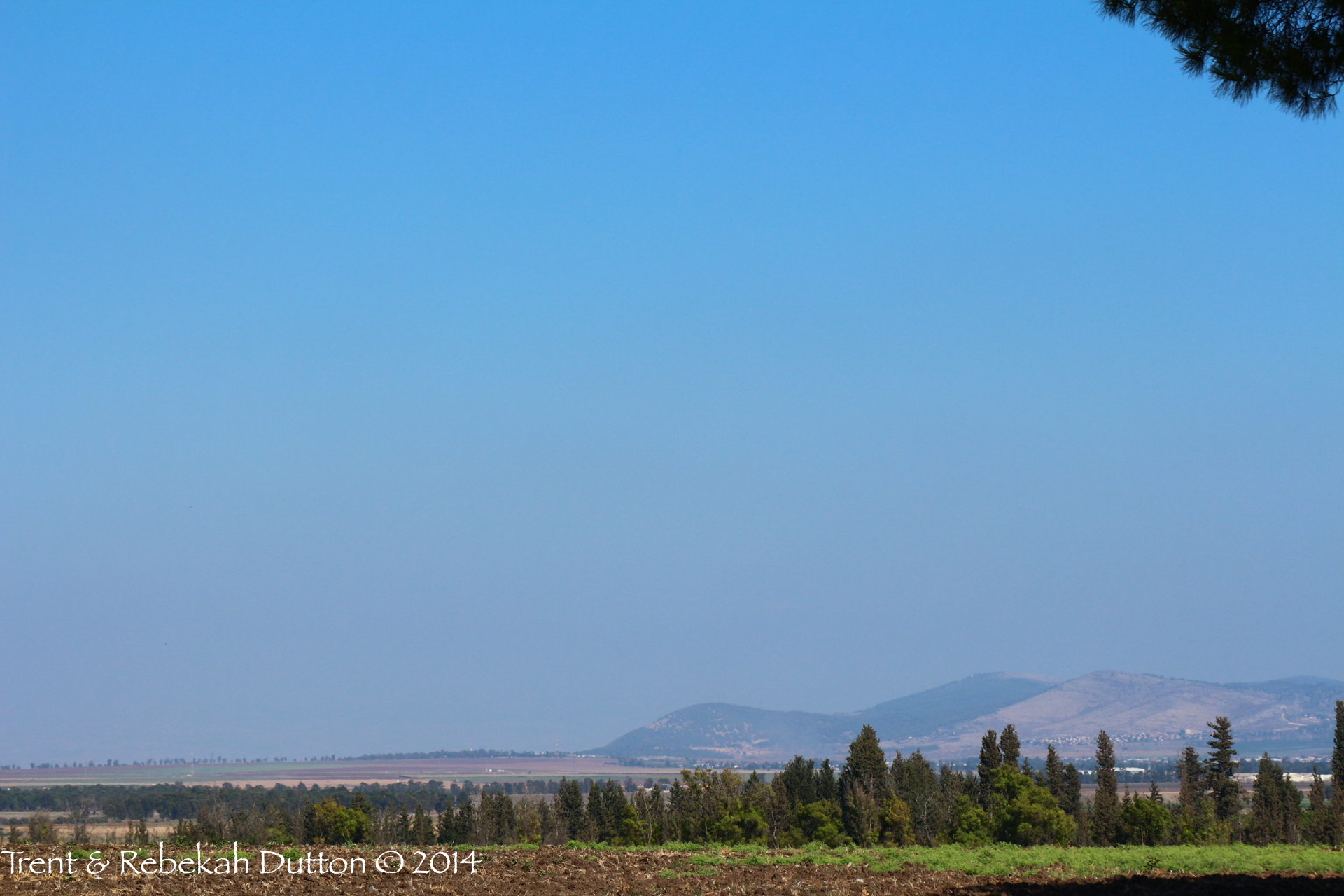 Mount Gilboa, along with the Hill of Moreh form the narrow passage that separates the Jezreel and Harod Valleys just west of Beit She’an. It was on this mountain that Saul and his sons fell to the Philistine army. Tradition claims this is the reason the eastern face of the mountain remains bare even to this day.
Mount Gilboa, along with the Hill of Moreh form the narrow passage that separates the Jezreel and Harod Valleys just west of Beit She’an. It was on this mountain that Saul and his sons fell to the Philistine army. Tradition claims this is the reason the eastern face of the mountain remains bare even to this day.
We’ll began posting again next week, after the Thanksgiving Holiday.
 From the tel of ancient Samaria, one can see the long stretch of mountains and mountain passes that make up the road from the Shechem Valley to the famous trading routes along the coast. Looking west, generations of its inhabitants have marveled at nature’s beauty as they watched the sun set over the Mediterranean beyond the hills.
From the tel of ancient Samaria, one can see the long stretch of mountains and mountain passes that make up the road from the Shechem Valley to the famous trading routes along the coast. Looking west, generations of its inhabitants have marveled at nature’s beauty as they watched the sun set over the Mediterranean beyond the hills.
 Within the Negev’s Southern Highlands is the beautiful Zin Valley, also known as the Desert or Wilderness of Zin. The wilderness offered one of the few roads through the mountainous highlands, including the winding Scorpions Ascent (Ascent of Akrabbim) along the Bozrah-to-Gaza Spice Route. As the valley approached the Jordan Valley, it becomes desolately arid with stifling heat.
Within the Negev’s Southern Highlands is the beautiful Zin Valley, also known as the Desert or Wilderness of Zin. The wilderness offered one of the few roads through the mountainous highlands, including the winding Scorpions Ascent (Ascent of Akrabbim) along the Bozrah-to-Gaza Spice Route. As the valley approached the Jordan Valley, it becomes desolately arid with stifling heat.
 The sycomore fig (Ficus sycomorus) was a staple fruit common in orchards in Israel (II Chronicles 1:15), and can produce small, fig-shaped fruits throughout the year. They are mentioned several times in the Old Testament, most famously as Amos’s means of living. The broad, heavily branched trunks would also make it easy for a man like Zacchaeus to climb high enough to see over a crowd (Luke 19:1-4).
The sycomore fig (Ficus sycomorus) was a staple fruit common in orchards in Israel (II Chronicles 1:15), and can produce small, fig-shaped fruits throughout the year. They are mentioned several times in the Old Testament, most famously as Amos’s means of living. The broad, heavily branched trunks would also make it easy for a man like Zacchaeus to climb high enough to see over a crowd (Luke 19:1-4).
 Access to water was a primary concern in any Israelite city, but particularly so in the arid regions to the south and east. Not only must the people ensure they had ample water to sustain them through the dry months between April and September, but also protect their supply from enemies during the age of siege warfare. Water systems, such as this one at Beersheba, solved both problems. These steps within the city walls lead down to a series of subterranean cisterns, which collected both ground water and overflow from the nearby wadi.
Access to water was a primary concern in any Israelite city, but particularly so in the arid regions to the south and east. Not only must the people ensure they had ample water to sustain them through the dry months between April and September, but also protect their supply from enemies during the age of siege warfare. Water systems, such as this one at Beersheba, solved both problems. These steps within the city walls lead down to a series of subterranean cisterns, which collected both ground water and overflow from the nearby wadi.
 The Mount of Temptation fringes the Judean Wilderness just north of the Dead Sea, where it looms over the site of Jericho (Tel es-Sultan). Because tradition states that, following His baptism, Jesus ascended this mountain to be tempted, a beautiful, gravity-defying monastery has been built on the mountainside. Above this is the fortress some believe to be Ptolemy’s hideaway, Dagon, mentioned by Josephus—though others conjecture this may be a later Crusader structure.
The Mount of Temptation fringes the Judean Wilderness just north of the Dead Sea, where it looms over the site of Jericho (Tel es-Sultan). Because tradition states that, following His baptism, Jesus ascended this mountain to be tempted, a beautiful, gravity-defying monastery has been built on the mountainside. Above this is the fortress some believe to be Ptolemy’s hideaway, Dagon, mentioned by Josephus—though others conjecture this may be a later Crusader structure.
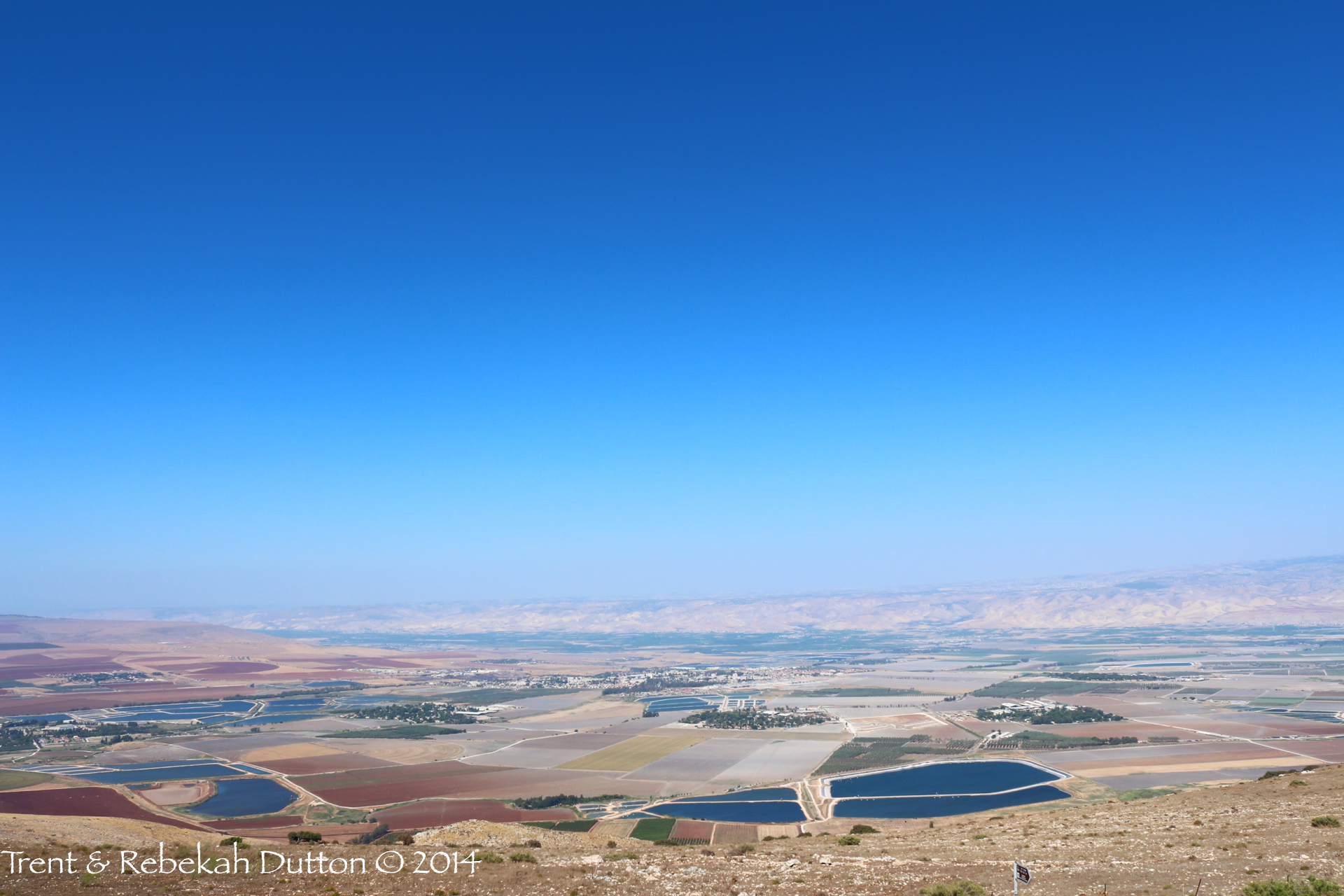 From atop Mount Gilboa, one is afforded a stunning view of the Jezreel Valley as it intersects with the Jordan Valley. At the center of this major junction is the ancient city of Beit She’an (Bethshean), where it guarded the crossing point from Pella in Jordan to the Jezreel—which would then lead on past Megiddo to the trade opportunities of International Trunk Route (sometimes called the Via Maris). This bottleneck of commerce underscores the value of Bethshean, beginning with Egyptians, Israelites, Philistines, and eventually even the empires of Alexander and Rome.
From atop Mount Gilboa, one is afforded a stunning view of the Jezreel Valley as it intersects with the Jordan Valley. At the center of this major junction is the ancient city of Beit She’an (Bethshean), where it guarded the crossing point from Pella in Jordan to the Jezreel—which would then lead on past Megiddo to the trade opportunities of International Trunk Route (sometimes called the Via Maris). This bottleneck of commerce underscores the value of Bethshean, beginning with Egyptians, Israelites, Philistines, and eventually even the empires of Alexander and Rome.
 The rock hyrax, or rock badger, is a gopher-sized mammal found in mountainous regions of Israel, such as Ein Gedi and Arbel. Known in the Mosaic laws as being unclean (as they chew the cud, but do not have cloven hoofs), Proverbs praises the small, social creatures as being one of four things which are little on the earth, but exceedingly wise: they are not a mighty people, but they make their home among the rocks.
The rock hyrax, or rock badger, is a gopher-sized mammal found in mountainous regions of Israel, such as Ein Gedi and Arbel. Known in the Mosaic laws as being unclean (as they chew the cud, but do not have cloven hoofs), Proverbs praises the small, social creatures as being one of four things which are little on the earth, but exceedingly wise: they are not a mighty people, but they make their home among the rocks.
 Aphek was already ancient even before it was granted to the tribe of Asher during the period of conquest. Located on a strategic bottleneck of the coastal roads, this was a valuable site which Herod the Great redesigned as a Romanesque city, complete with a theater and cardo, or main North-South street (pictured above). He renamed it Antipatris, after his father, and it was to this city that Claudias Lysias brought Paul to escape the Jewish plot.
Aphek was already ancient even before it was granted to the tribe of Asher during the period of conquest. Located on a strategic bottleneck of the coastal roads, this was a valuable site which Herod the Great redesigned as a Romanesque city, complete with a theater and cardo, or main North-South street (pictured above). He renamed it Antipatris, after his father, and it was to this city that Claudias Lysias brought Paul to escape the Jewish plot.
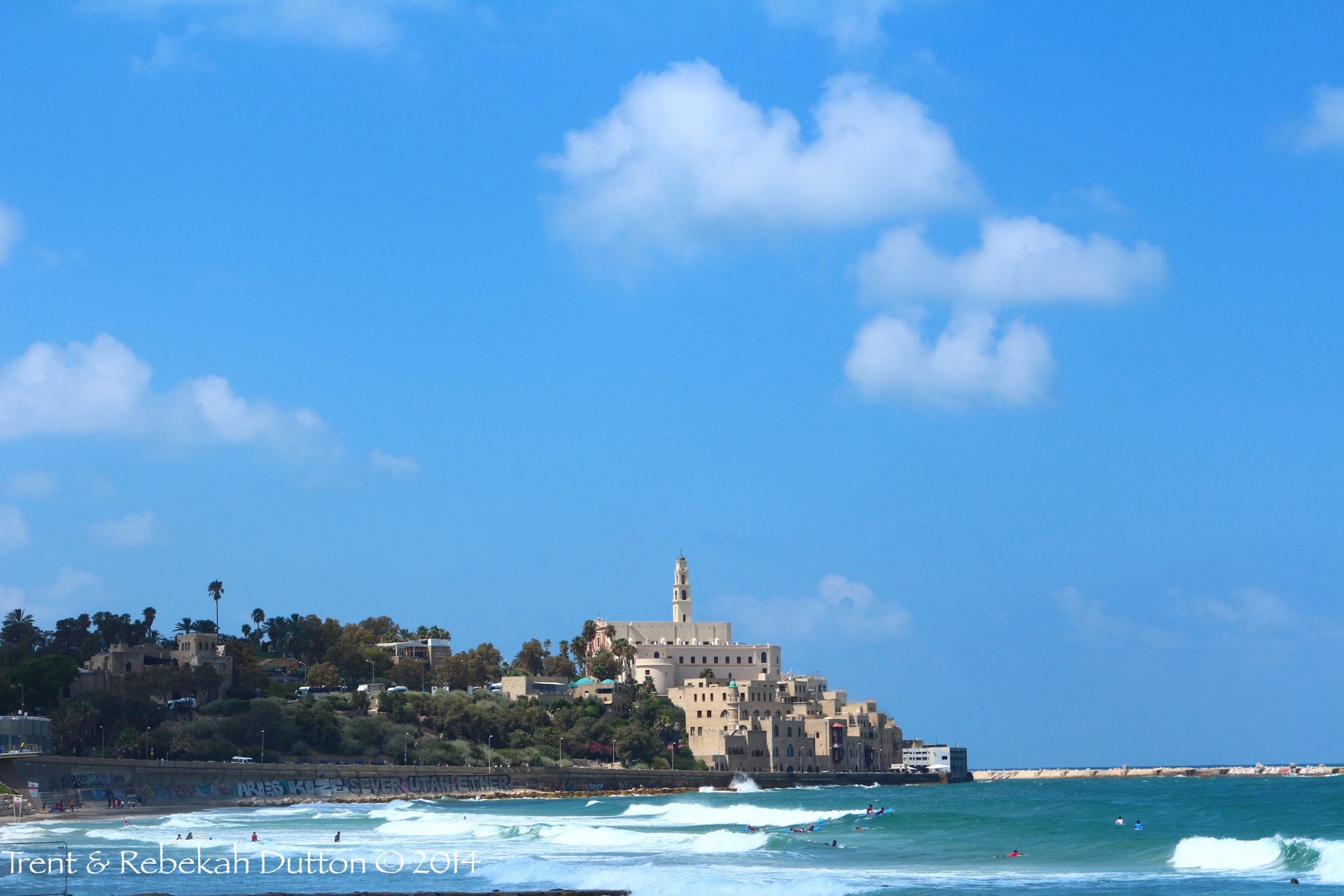 The ancient city of Joppa lies on the coast of the Mediterranean sea, mostly underneath buildings from much later periods, in modern-day Tel Aviv. It served as a seaport for delivering Phoenician cedars to Israel, and was a jumping off point in Jonah’s flight to distant Tarshish. Peter would later receive Cornelius’s emissaries after healing Tabitha in this seaside town.
The ancient city of Joppa lies on the coast of the Mediterranean sea, mostly underneath buildings from much later periods, in modern-day Tel Aviv. It served as a seaport for delivering Phoenician cedars to Israel, and was a jumping off point in Jonah’s flight to distant Tarshish. Peter would later receive Cornelius’s emissaries after healing Tabitha in this seaside town.
 From the top of Wadi David at Ein Gedi, you can see the coast of the Dead Sea as far as Masada in the center of the faint ridge in the distance (a wadi is a deep ravine, usually with seasonal flash floods). This view is one not often seen, as it is a 45-minute hike up from the waterfalls of Ein Gedi, at the site of the Chalcolithic era temple at Ein Gedi. I Samuel 23:14 states that David had strong holds in the wilderness, and this wadi at Ein Gedi could have sustained many men while also providing an excellent defensive position.
From the top of Wadi David at Ein Gedi, you can see the coast of the Dead Sea as far as Masada in the center of the faint ridge in the distance (a wadi is a deep ravine, usually with seasonal flash floods). This view is one not often seen, as it is a 45-minute hike up from the waterfalls of Ein Gedi, at the site of the Chalcolithic era temple at Ein Gedi. I Samuel 23:14 states that David had strong holds in the wilderness, and this wadi at Ein Gedi could have sustained many men while also providing an excellent defensive position.
The photo below was shot with a telephoto lens from the same perspective as the above photo, but zoomed in on Masada. If you are familiar with Masada, you will recognize this as it's north face. You can see the Roman siege ramp on the right side. While Masada is best known from Herod the Great's period, sites like it and Ein Gedi could have also served as strongholds for fugitives like David or for his watchmen who needed to maintain a line of sight with other encampments.